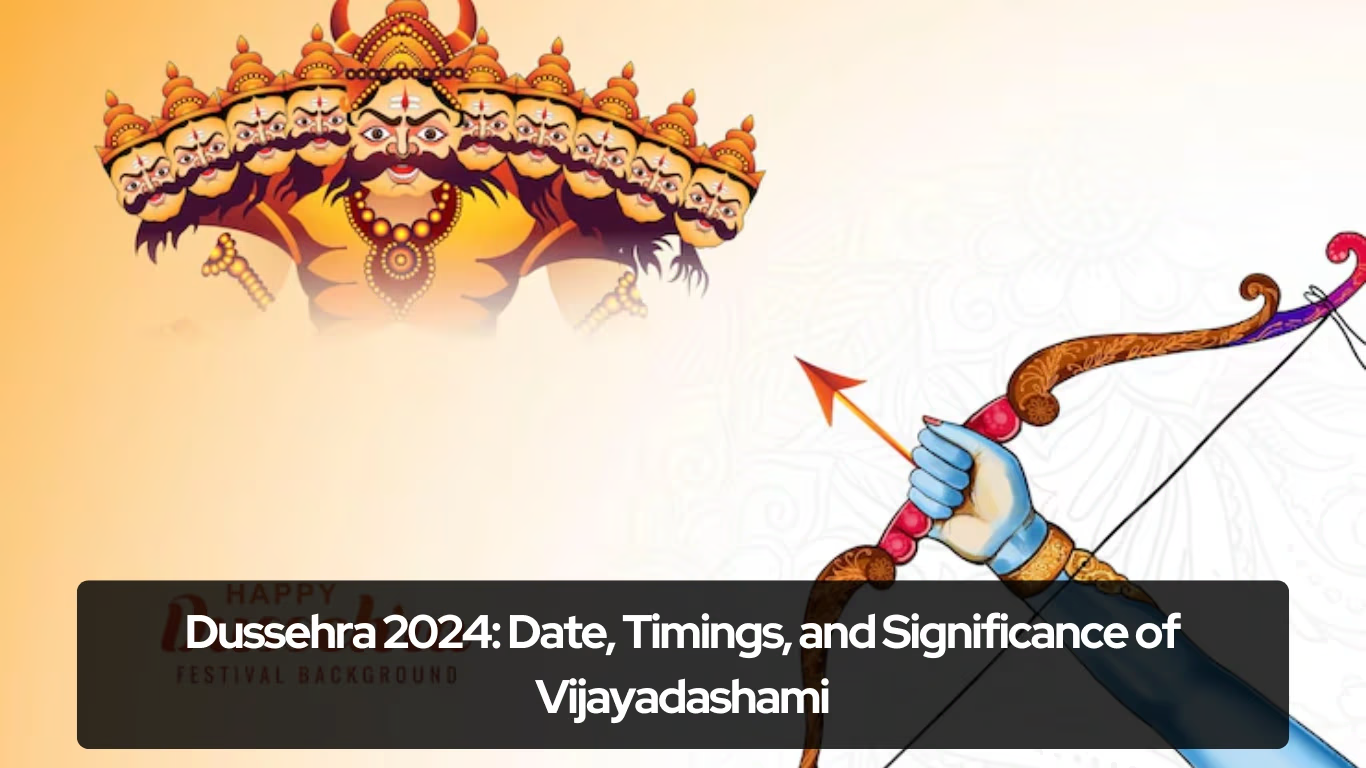Dussehra, also known as Vijayadashami, is a major Hindu festival that symbolizes the victory of good over evil. Celebrated across India and Nepal, the festival is filled with joy, devotion, and grandeur. In 2024, Dussehra will be observed on Sunday, October 13th, and, as always, will be marked by various cultural traditions and rituals. This article explores the date and timings for Dussehra 2024, its cultural significance, and the unique way the festival is celebrated across regions.
Dussehra 2024: Date and Time
Here are the key details for Dussehra 2024:
| Event | Day/Date/Time |
|---|---|
| Bengal Vijayadashami | Sunday, October 13, 2024 |
| Vijay Muhurat | 02:02 PM to 02:49 PM |
| North Vijayadashami | Saturday, October 12, 2024 |
| Bengal Vijayadashami Aparahna Time | 01:16 PM to 03:35 PM |
| Dashami Tithi Begins | 10:58 AM on October 12, 2024 |
| Dashami Tithi Ends | 09:08 AM on October 13, 2024 |
Vijay Muhurat, the most auspicious time for rituals, falls between 2:02 PM and 2:49 PM on October 13th, 2024. This time is considered highly favorable for performing Dussehra ceremonies, as it is believed to bring success and good fortune.
The Significance of Dussehra (Vijayadashami)
Dussehra has deep roots in Hindu mythology, representing the victory of good over evil. It commemorates two significant events:
1. Lord Rama’s Victory Over Ravana
The most well-known story behind Dussehra is the epic battle between Lord Rama and Ravana, the ten-headed demon king of Lanka. After a fierce struggle, Lord Rama defeats Ravana and rescues his wife, Sita, marking the triumph of righteousness (dharma) over unrighteousness (adharma).
In Northern India, this story is celebrated with large-scale performances of Ram Lila, where actors enact scenes from the Ramayana. The highlight of the celebrations is the burning of massive effigies of Ravana, his brother Meghnad, and his general Kumbhakarna, symbolizing the destruction of evil.
2. Goddess Durga’s Victory Over Mahishasura
In the eastern parts of India, particularly West Bengal, Vijayadashami is celebrated as the day when Goddess Durga defeated the demon Mahishasura. After a grueling battle that lasted for nine days, Durga emerged victorious on the tenth day, marking the end of the Durga Puja festival.
This celebration of Durga’s triumph represents the power of Shakti (divine feminine energy) overcoming the forces of darkness. The festivities conclude with the immersion of Durga idols in water bodies, signifying her return to the heavens.
Dussehra 2024: Regional Celebrations
Northern India: The Burning of Ravana’s Effigies
In Northern India, Dussehra is synonymous with the burning of Ravana’s effigies. Communities come together to witness this dramatic spectacle, with crowds gathering to watch the fireworks and symbolic destruction of evil. The Ram Lila performances, which recount Lord Rama’s victory, are a central part of the celebration, particularly in cities like Delhi, Varanasi, and Ayodhya.
West Bengal: The Grand Durga Puja Finale
In West Bengal, Dussehra, or Vijayadashami, is the grand finale of the ten-day Durga Puja festival. Devotees celebrate this day by offering their final prayers to Goddess Durga, followed by emotional processions and the immersion of Durga idols in rivers or seas. Before the immersion, women participate in a traditional ritual known as Sindoor Khela, where they smear each other with vermillion powder, symbolizing marital bliss and the strength of womanhood.
Unlike the rest of India, where the focus is on the Vijay Muhurat, in Bengal, the celebrations are tied more closely to the Dasami Tithi (lunar day), reflecting the region’s distinct cultural practices.
Why Dussehra Is Important
Dussehra is more than just a celebration of ancient victories; it is a reminder of the eternal struggle between good and evil. The festival urges us to confront and overcome the challenges and obstacles we face in life, just as Lord Rama and Goddess Durga did in their respective battles.
From the burning of Ravana’s effigies to the emotional farewell to Goddess Durga, the message of Dussehra is universal—good will always triumph over evil, no matter the odds.
As we celebrate Dussehra 2024, it is important to reflect on the values the festival represents: courage, righteousness, and the pursuit of justice.
Conclusion
Dussehra 2024 will be celebrated with much fanfare across India and Nepal, on October 13th, 2024. Whether you partake in the Ram Lila performances in North India or witness the grand Durga Puja processions in West Bengal, the essence of Dussehra remains the same: a celebration of the victory of good over evil.
This year, as we prepare to mark this special occasion, let’s embrace the teachings of Vijayadashami—that with perseverance and the strength to do what is right, we too can overcome the adversities in our lives.

